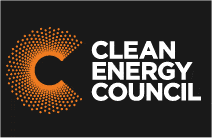Responding to Industry Minister Ian Macfarlane’s comments last week, the Clean Energy Council has again said the Federal Government should leave the Renewable Energy Target alone.
Last week, Minister McFarlane appeared to be wringing his hands over the fact Australia now had substantially more electricity generation capacity than it needs; thanks in part to the Renewable Energy Target.
The RET was designed to reduce electricity generation emissions – and it’s obviously done that very well. But instead of the excess generation scenario offering providing a great opportunity to now shutter some polluting coal fired plants, Minister McFarlane suggested the Large-scale Renewable Energy Target be slashed.
“The Warburton review showed that we have too much coal-fired power generation in Australia, not too much renewable energy. Recent polls by Crosby Textor and others show that voters overwhelmingly want to see Australia use more renewable energy, and less coal-fired electricity,” said Clean Energy Council Acting Chief Executive Kane Thornton.
“Neither the government nor the Warburton review has made any convincing argument for reducing the RET, particularly as the review’s own economic modelling showed every scenario for reducing the target would result in higher power bills.”
Mr. Thornton also again raised the issue of the frequency of reviews.
“Having a review every two years of a policy expected to attract long-term investment is madness, which is why we have consistently asked for this to be removed from the legislation.”
Also revealed last week was lobbying from Big Energy some years back regarding the RET appears to have come back to bite it on its bum.
Some of the argy-bargy occurring at the moment in relation to the RET is over percentages vs. gigawatt hours. The LRET is set at 41,000 gigawatt-hours; but some power companies want to see it set to a “real” 20% of electricity consumption.
The Renewable Energy Target was introduced in 2001 by then prime minister John Howard. Originally, it was set at 2 per cent by 2010. However, according to an article on The Australian, “the percentage was converted to 9500 gigawatt hours by 2010 after representations from the electricity industry, which argued a set figure provided more certainty.”
In 2009, the Labor government increased the figure to 20% by 2020; and based on electricity consumption forecasts, set it at 41,000 GWh for the large scale component.
So, originally the target was a percentage and the electricity generators didn’t like it; so a set figure was used. Now it appears many in the traditional power industry appear to dislike a set figure and want a percentage again; regardless of the negative impacts it would have on industry and consumers.













































